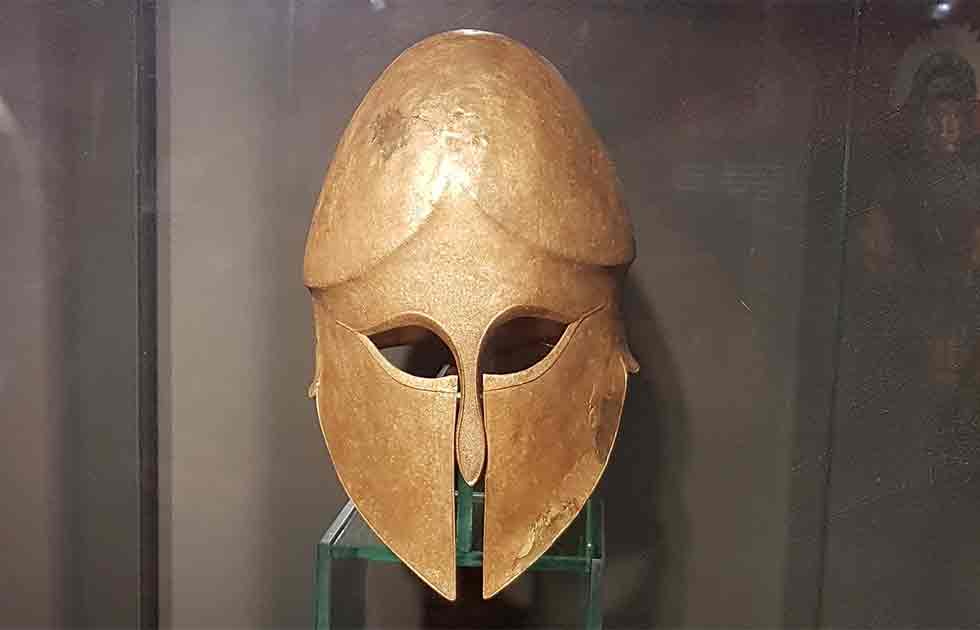Corinthian Bronze: Flawless Metal Secret of the Ancients
 In 146 BC, the city of Corinth burned. Lucius Mummius Achaicus, statesman of the Roman Republic and Consul for that year, had taken an army to the city’s gates and conquered the Greeks. He took a torch to the city, and in destroying it he created something wonderous.
In 146 BC, the city of Corinth burned. Lucius Mummius Achaicus, statesman of the Roman Republic and Consul for that year, had taken an army to the city’s gates and conquered the Greeks. He took a torch to the city, and in destroying it he created something wonderous.
Corinth was extremely wealthy, a powerful and successful city state which controlled the land bridge which connects northern and southern Greece. The Corinthians had vast reserves of precious metals, gold, silver and bronze. And as the flames gutted the city, these metals were melted by the intense heat.
It was said that these metals ran in liquid puddles out of the storerooms, collecting on the floors and doorways of the ruined buildings. And, when the conflagration was over and the Romans picked over the smoldering remains of great Corinth, they found something beautiful amidst the desolation.
They named their discovery for the city they had just destroyed, the city which had created it. They named it Corinthian Bronze.
A Lost Perfect Alloy
Corinthian Bronze was said to shine amidst the ruins, a bronze alloy which did not tarnish, which kept its luster. The Romans collected what they could, and set to work replicating this splendid new metal.
The alloy was said to shine brightly, more akin to gold or silver than dull bronze. Both Plutarch and Cicero commented on the beauty of the new metal, how it would not dull but retained its perfect surface and glowed brightly.
- Arsenical Bronze: Deadly Metal of the Bronze Age
- Orichalcum: Mystery Metal of the Ancients
We also know the Romans were successful in replicating this alloy, and Corinthian Bronze became fairly well known throughout the Roman Republic and later the Empire. But not a single example of Corinthian Bronze survives today, and modern efforts to recreate it have all met with failure.
This is unexpected: most “lost” secrets of the ancients come from the Bronze Age, if not earlier: lost in the Bronze Age Collapse around the 12th century BC, or in earlier prehistory. Corinthian Bronze was discovered a thousand years later than this in the Iron Age, and as far as historical records go we are on much firmer ground here.
This is not to say Corinthian Bronze is the only mystery from this time. Orichalcum was another alloy made by the Romans and the earlier Greeks, but examples of Roman orichalcum survive and the mystery of orichalcum seems to be that the Romans didn’t know what it originally was, either.
Silphium, a Roman dietary supplement and aphrodisiac, was a common plant, also lost to modern science and presumed extinct. But plants wither and rot away, nowhere near as enduring a metals, and amidst all the artifacts of Rome’s great Empire we would expect a single example of Corinthian Bronze to survive. But there is nothing.
Some suggest that Corinthian Bronze is a simple mixture of gold, silver and bronze such as we can make today, and that the stories of its wondrous sheen were overblown, exaggerations by the historians and orators of the time as they warmed to their theme. Some suggest that the entire story of its creation is fiction: it certainly has the right mix of melodrama and fantasy.
Corinth always had a reputation for the quality of their bronze. Maybe “Corinthian Bronze” is simply bronze from Corinth, which history has lumped together with the overblown tall tales of aggrandizing Romans.
It is also suggested that Corinthian Bronze, or at least the attempts to recreate it, may have spurred the alchemists of medieval Europe in their attempts to transmute lesser metals into gold. After all, if Plutarch was to be believed, it had been done before with this wondrous, shining material.
But there may be a way to pick through the unreliable records and find this Iron Age wonder once again. Modern thinking is that Corinthian Bronze may be linked to the “Black Copper” so loved by ancient Egypt. We have Egyptian statues which we think include inlaid Black Copper sections, analyzed to be a metal not unlike the deadly but highly valued Arsenical Bronze of the later Bronze Age.
Classical records do mention “Hepatizon”, a blackened form of bronze which may be this latter metal. Or it may be that the real Corinthian Bronze is staring us right in the face. But whether this is true, or indeed whether it ever existed at all, remains for now a mystery.
